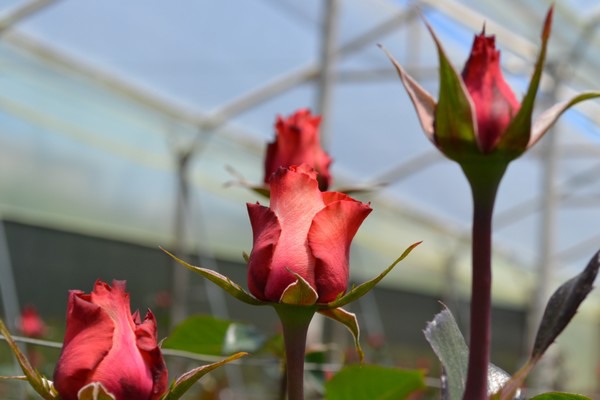Sometimes, we hear mention of El Niño in the weather report and all of the effects it is having on the weather outside our front door, but have you ever wondered what El Niño really is? What does it mean for all of us, and how might it impact the flower biz?

El Niño is a phase of a natural climate pattern (opposite of La Niña) occurring across the tropical Pacific Ocean that swings back and forth every 2-7 years on average. The length of these cycles is completely unpredictable, but the impacts on global weather patterns are undeniable. El Niño’s warmer waters influence weather patterns for Colombia’s climate and environment, though it’s not certain what may develop, there are many possible scenarios of weather-related issues that can happen during an El Niño period. Here are some examples:
Drought
El Niño is often associated with reduced rainfall in Colombia, particularly in the northern and central regions. This can lead to drought conditions, which can have a severe impact on agriculture, water availability, and hydroelectric power generation. Reduced rainfall during El Niño can also increase the risk of wildfires.
Crop Failure
Drought conditions during El Niño can result in lower crop yields and even crop failures in some areas. Agriculture is a significant industry in Colombia, and reduced rainfall can lead to a decline in production, affecting farmers and the country’s economy as a whole.
Water Shortages
With decreased rainfall and drought conditions, water sources such as rivers, lakes, and reservoirs can experience lower water levels. This can lead to water shortages for both domestic and industrial use, affecting communities, businesses, and hydropower generation.
Temperature Extremes
El Niño events can also influence temperature patterns in Colombia. Some regions may experience higher temperatures than usual, which can affect human health, increase energy demand for cooling, and put additional stress on ecosystems.
Impact on Ecosystems
El Niño can disrupt marine ecosystems along the Pacific coast of Colombia. The warming of ocean waters associated with El Niño can result in changes to marine currents, affecting fish populations and leading to declines in fishing yields. Additionally, El Niño can cause coral bleaching events, affecting coral reefs and marine biodiversity.
These are all potential developments, but nothing’s set in stone. The specific impacts of El Niño can vary greatly in magnitude and spatial distribution from cycle to cycle. While El Niño typically does bring drier conditions to Colombia, the severity and duration of the effects can vary with each occurrence.
It may seem like there isn’t much to do against the forces of nature, but if we remain vigilant, monitoring and forecasting El Niño events can be the crucial difference for preparedness and timely response to mitigate any issues.

